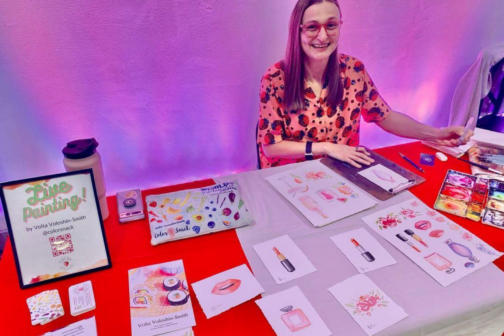The University of North Texas Health Science Center at Fort Worth has been awarded a $150 million grant from the National Institute for Aging, an arm of the National Institutes of Health. It is one of the largest awards ever given to Alzheimer’s research and the largest ever received by the University of North Texas System.
The grant will fund research by Dr. Sid O’Bryant, the executive director of UNTHSC’s Institute for Translational Research and one of the country’s leading experts on Alzheimer’s research. (He was also the subject of this 2014 D piece about his work, “The Bodybuilder Who Wants to Fix Our Brains”).
The initiative will be the first large-scale study of the biology of Alzheimer’s disease among different races. It will use a health disparities framework to study how the disease affects the brains of African American, Hispanic, and White patients. The five-year grant will include resources from 17 different organizations, but all participants in the study will live in North Texas.
“This transformative grant will propel the life-changing research around Alzheimer’s disease and health disparities happening in Fort Worth at HSC,” said HSC President Dr. Sylvia Trent-Adams in a statement. “The opportunity to change the trajectory of Alzheimer’s and lead this first-of-its-kind health disparities work is an honor and privilege for all of North Texas and beyond.”
Alzheimer’s disproportionately impacts Hispanic and Black Americans, but the research doesn’t reflect that reality. “We want to understand how this disease presents across the community,” O’Bryant says. “One of the drawbacks to the vast majority of Alzheimer’s research is that patients are usually 90-95 percent White. It is done through clinics with educated patients. It’s not representative of the community.”
O’Bryant has done similar work for decades, and the institute has already received $210 million from the NIH over the past decade to study how Alzheimer’s is impacted by health disparities.
“Our group has been at the forefront of trying to document and understand how Alzheimer’s presents differently among different ethnic groups for a long time,” he says. “This grant is the product of 15 to 20 years worth of prior work.”
Researchers will follow patients for decades to see how Alzheimer’s affects different populations. They will conduct the first-ever large-scale, diverse, longitudinal biological study of how Alzheimer’s affects the mind. Data collection will include cognitive testing, an interview, clinical labs, a functional exam, a brain MRI, PET scans, genomics, and more. “It would actually be difficult to find ways we’re not studying the biology,” O’Bryant says.
Back in 2014, O’Bryant was active in another program that was helping more than 3,000 elderly Latino residents manage chronic diseases and some minor medical issues. Those patients volunteered to have their blood drawn and stored for future research purposes, pending funding. In the meantime, O’Bryant studied the brain tissue of genetically modified mice to identify biomarkers present among Alzheimer’s patients that could lead to some sort of treatment.
Here’s an excerpt from the 2014 story:
O’Bryant studied the brain tissue and blood of genetically modified mice, attempting to match biomarkers present in both. He has found that the disease is “a mixed bag,” that it doesn’t affect everyone as neatly and uniformly as it’s currently treated. The biomarkers he has identified can pick out mice with Alzheimer’s at a success rate of 90 percent or higher, he says. If he gets his money, he is confident he’ll be able to back that up in humans and show the differences in its development in different racial and ethnic demographics, something that has never been done before.
The team will also be studying neighborhood-level factors, social determinants of health, and how social stress impacts the frequency and intensity of the disease.
The research will involve significant community engagement, which has been ongoing since 2012. It will continue to leverage relationships in the region, including through social media and in-person appearances at events to expand the number of people involved in the study. The researchers are looking for participants throughout North Texas who may fit the study’s desired demographics.
“What many people don’t realize is the DFW community currently reflects the demographic populations of where this country will be by 2050,” O’Bryant says. “The percentages of representation of diversity in our community is already where the United States is going.”
The study has currently registered around 3,000 people over age 50 but will look to add 1,500 more. The participants will be evenly divided among Black, White, and Hispanic-non-White people. The goal is to add 500 people between 30 and 49 years old to each ethnic group to capture data and pinpoint the factors that influence the occurrence of Alzheimer’s.
In addition to understanding how societal and ethnic factors impact the disease, the study aims to help develop precision medicine that would then target specific groups. The existing framework for how the medical industry approaches the disease does not reflect the diversity of the population that has been diagnosed, O’Bryant says.
White populations with Alzheimer’s often have biomarkers that are different from Hispanic and Black populations. The disease also shows itself at different times with diverse populations. Understanding these differences can impact how pharmaceutical companies develop therapies, target trial participants, and finally find a cure for the most common neurodegenerative dementia.
This project is so important, so robust, and so broad,” O’Bryant says, “it will unequivocally change the world.”
Sign up for the study here, or call the lab at 817-735-2963.
Author







